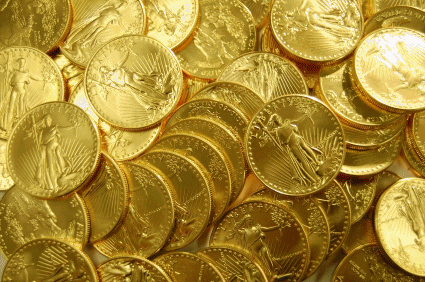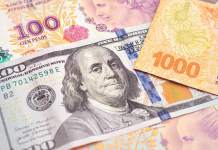Tips For Investing In Physical Gold Bullion
When it comes to investing in gold, there’s good news and bad news. The good news is that you have a lot of choices. The bad news? You have a lot of choices.
You can buy gold bars. You can buy gold coins. You can buy antique coins. You can invest in a gold fund. You can buy shares in a big-cap miner that’s already producing gold. You can buy shares in small gold companies that have yet to mine an ounce. It’s all wide open, and especially if you’re new to gold investing, that can be daunting.
As gold prices double and triple and more in coming years, a lot of money will be made in all the above possibilities. But there are pros and cons to each. In this final section of the book, I’ll walk you through the opportunities and drawbacks as best I can. The truth is, there’s no one right way to invest in gold, though I feel there are a couple of wrong ways, or at least ways I wouldn’t recommend.
For starters, there are two broad categories to consider (and it’s fine, indeed a good idea, to invest in both): physical gold and gold mining companies. In this chapter I focus on the ins and outs of physical gold.
Bars, Rounds, and Coins
A while ago I had a rather memorable conversation with the manager of the precious metals portion of a major state’s pension fund. He was bullish on gold and said he’d bought shares in a gold ETF (exchange-traded fund) for his client. I asked him if he owned it for himself as well, and he said, hell no. For his own gold investing, he said, he bought gold bars – the actual physical stuff.
A lot of gold enthusiasts feel the same way, that nothing beats actually owning physical gold, or bullion. Are they right? In many ways, you can’t argue with them. Owning physical gold has a lot of merit and will be a surefire – and in some respects the safest – way to benefit from gold’s coming gains. But it also has some undeniable hassles and isn’t for everyone. To help you decide if it is or isn’t right for you, here are some of the basics.
The first thing to realize is that even if you like the idea of owning physical gold, you still have more choices to make. Physical gold comes in different forms: bars, coins, and rounds. Coins are further subdivided into the collectable/numismatic type and contemporary coins.
Mints Verses Refiners
All these forms of gold come in various weights and dimensions and are produced by mints and refiners around the world and sold by dealers. One important distinction is between mints and refiners. Mints are either fully or partly government-owned. They are the only entities officially authorized to produce coins that are recognized as legal tender.
These coins have a face value, but their actual value is far greater because of the intrinsic value of the gold that constitutes them. The best-known mints include the:
United States Mint
Royal Canadian Mint
Perth Mint of Australia
South African Mint
The most widely popular coins are the American Eagle, the Canadian Maple Leaf, and the South African Krugerrand.
Refiners produce bars and rounds (both of which mints can produce as well) but not coins. Rounds are similar in appearance to coins. But they aren’t recognized as legal tender, since they are issued by private refiners that don’t have a relationship with the government. Popular refiners include PAMP Suisse, Engelhard, and Credit Suisse.

Understanding Gold Spot Price Flux
Prices of all these forms of physical gold are determined by the spot price, which is derived from the Comex futures market and the London Gold Fix. All bullion products rise and fall in value in accordance with fluctuations in the spot prices. The products sell at a premium to the spot price, with the spread typically narrowing during bear markets in gold and widening when gold is uptrending.
Coins normally sell at a premium to bars. The spread in price between the two usually widens when gold is trending upward and narrows when gold is trending downward. A few years ago, when gold was experiencing a correction, the difference between a one-ounce gold bar produced by the Royal Canadian Mint and a one-ounce Maple Leaf coin was $10. The difference was more than $100 dollars in 2011 when gold hit a peak.
Older coins tend to cost more than more recent ones. In addition, coins issued in certain years or with special designs may be more valuable than standard coins from the most recent year.
Which Option Do I Choose?
Choosing between coins and bars depends in part on what quantity of gold you’re looking to buy. Most coins come in weights of one ounce or less, while bars range in size from one gram to 400 ounces. Because you pay a premium for buying coins, buying a large bar lets you get the most gold possible at the lowest cost. As an illustration, if the spread between coins and bars is $50 per ounce, and you want to buy 10 ounces of gold, you’d pay $500 more just to get that gold in the form of coins rather than in a bar.
But coins have some advantages over bars. If you’re looking to buy just a small amount of gold at a time – a fraction of an ounce – they’d be a natural choice. In addition, it may be easier to sell coins if you need to cash in. With bars, you may have to offer proof of their purity. Some dealers may require that you pay to have the bars fire assayed, meaning melted down so as to validate that they reach the requisite level of purity. Or they may test them by newer methods, such as x-ray scanning, ultrasound, or acid testing.

You can avoid having to worry about proving purity if you buy bars that come in a sealed plastic security case with serial numbers and/or an assay certificate containing bar codes. Look for bars that state they are “In Assay.” In general, there’s no issue if you stick with bars that are no more than 10 ounces in weight and that are manufactured by one of the major mints. And the path is even smoother if you sell the bar back to the dealer you had bought it from (make sure you retain the receipt).
If you’re new to gold buying but like the thought of owning physical gold, I’d suggest the most straightforward approach is to stick with coins produced by a reputable mint and not look for what might seem like better deals from other sellers. It’s worth paying the premium to be assured that you’re getting what you think.
If you or someone you know is interested in purchasing and storing physical gold bullion… my latest book reveals all the intel for investors need!
Available Now on Amazon, Kindle & Audible!

















